In this post, we will show you how to run Scheduled Task as Administrator in Windows 11/10. Some applications require administrator privileges to execute tasks on a Windows PC. For example, running PowerShell as an administrator is often necessary to execute scripts that require elevated privileges to change system settings, manage system resources, or install third-party software. If such scripts are run without administrator rights, they may generate issues or bugs in the Windows operating system. In this post, we will show you how to make an app get administrator rights while it runs silently as part of a scheduled task.
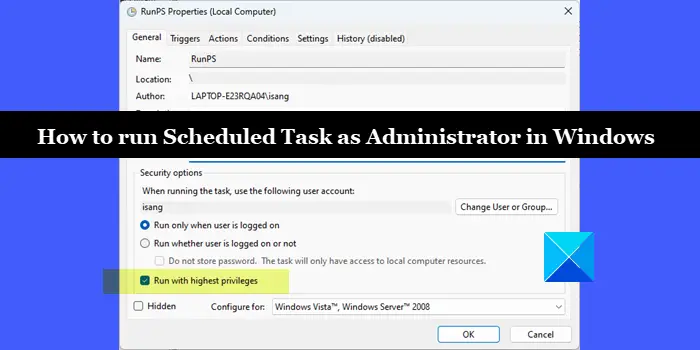
How to run Scheduled Task as Administrator in Windows 11/10
Suppose you have created a task to automate your PowerShell script using the Task Scheduler app. To run this scheduled task as administrator on your Windows 11/10 PC, you need to follow these steps:
- Launch Windows Task Scheduler.
- Select the task.
- Enable the ‘Run with highest privileges’ option.
Now before we dive deep into the details of this process, make sure you are using an administrator account to run the task. In Windows 11/10, a non-admin user can’t run a scheduled task that requires admin privileges. If you’re using a standard user account, ensure it is part of the local administrator group. If you’re using a domain admin account, you may create an account that has local administrator privileges and use it to run the task. Or you may run the task using the SYSTEM account to bypass the UAC dialogue.
Coming to the point, here’s how you may run scheduled tasks as an administrator in Windows 11/10:
1] Launch Windows Task Scheduler
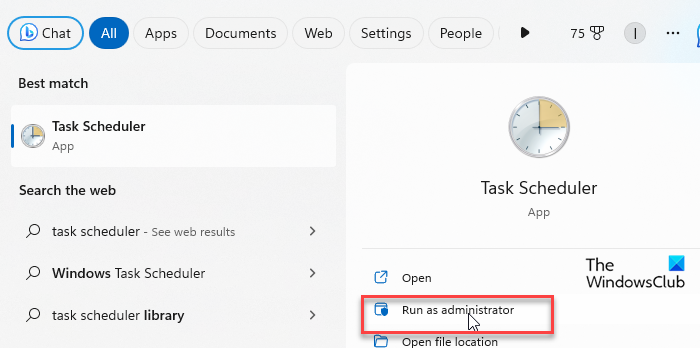
Click on Windows Search and type ‘task scheduler’. Task Scheduler will show up as the best match. On the right side, click on the Run as administrator option (second option from top).
2] Select the task
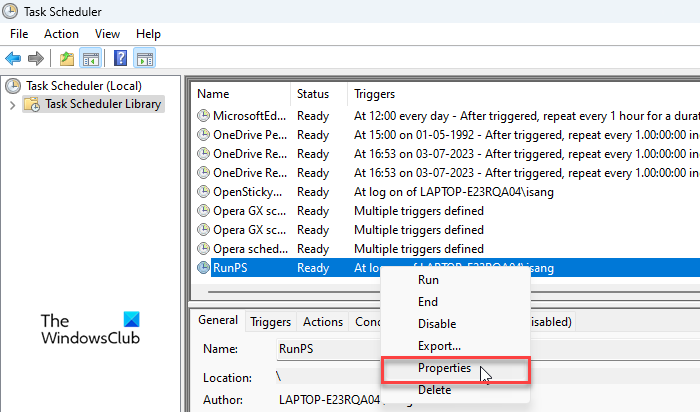
Windows Task Scheduler will open up. Click on the Task Scheduler Library option in the left panel. All the scheduled tasks will show up in the center of the program window. Right-click on the task you want to run using admin rights and select Properties. You may also click on the Properties option in the right panel or simply double-click on the task.
3] Enable the ‘Run with highest privileges’ option
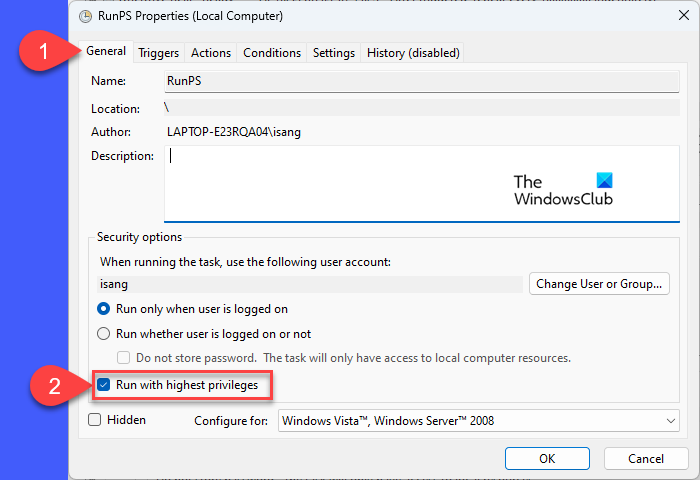
In the task properties window, look for the Run with highest privileges option under the General tab. Click on the checkbox to enable the option and then click on the OK button.
If you want to run the task from a standard user account (which is a member of the admin group), make sure to select the Run whether user is logged on or not option.
When you save the task, you may be required to enter a password (password of the user who will be executing the task). Enter the password and click on the OK button.
Note: If you’re using PowerShell to execute a script, you may update the following fields within the Actions tab of the task properties window to run the scheduled task as an administrator:
Program/script: C:\Windows\System32\WindowsPowerShell\v1.0\powershell.exe
Add arguments (optional): -ExecutionPolicy Bypass -File "C:\Users\isang\Desktop\TWC_script.ps1"
replacing C:\Users\isang\Desktop\TWC_script.ps1 with the location of your saved PowerShell script file.
Also, set your execution policy to make this work.
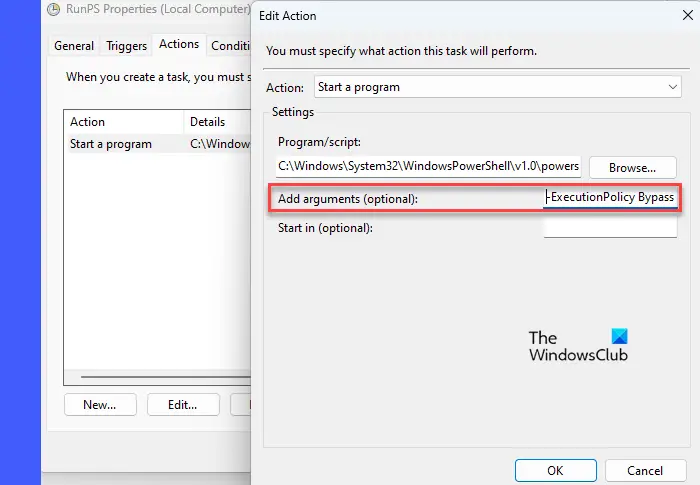
That’s it! I hope this helps.
Also read: How to schedule a Batch File to run automatically in Windows.
How do I run Task Scheduler as administrator in Windows 11?
Besides using Windows Search to run Task Scheduler as an administrator, you can use the Task Manager app to create a new task that runs Task Scheduler using administrator privileges. Right-click on the Start button icon and select Task Manager. Click on the Run new task button. Type taskschd.msc in the Open field and select the Create this task with administrator privileges option. Click OK to launch Task Scheduler as an administrator.
How do I force a scheduled task to run as administrator?
To force a scheduled task to run as administrator on a Windows 11/10 PC without disabling the UAC prompt, you should enable highest privileges under security options. This will give the user ‘administrator privileges’ the same way a User Account Control prompt gives. Double-click on the task entry in Windows Task Scheduler and check the box that reads Run with highest privileges. Click on OK to save the task. Click on the Run icon in the right panel to test the task. It will run with admin rights without invoking the UAC prompt.
Read Next: Task Scheduler not running, triggering, or starting programs in Windows.
Leave a Reply